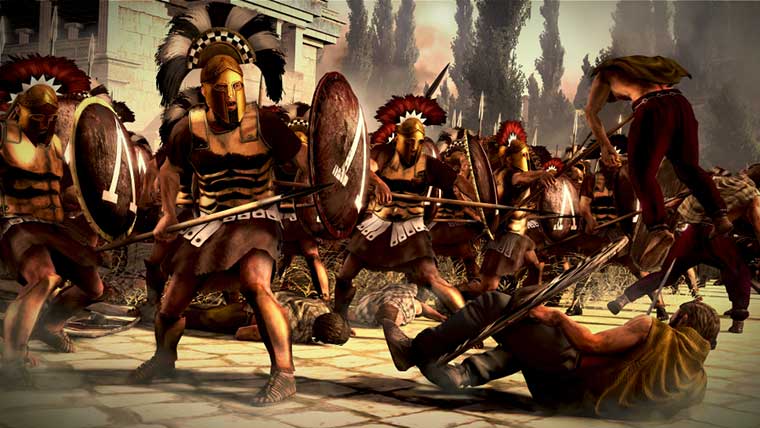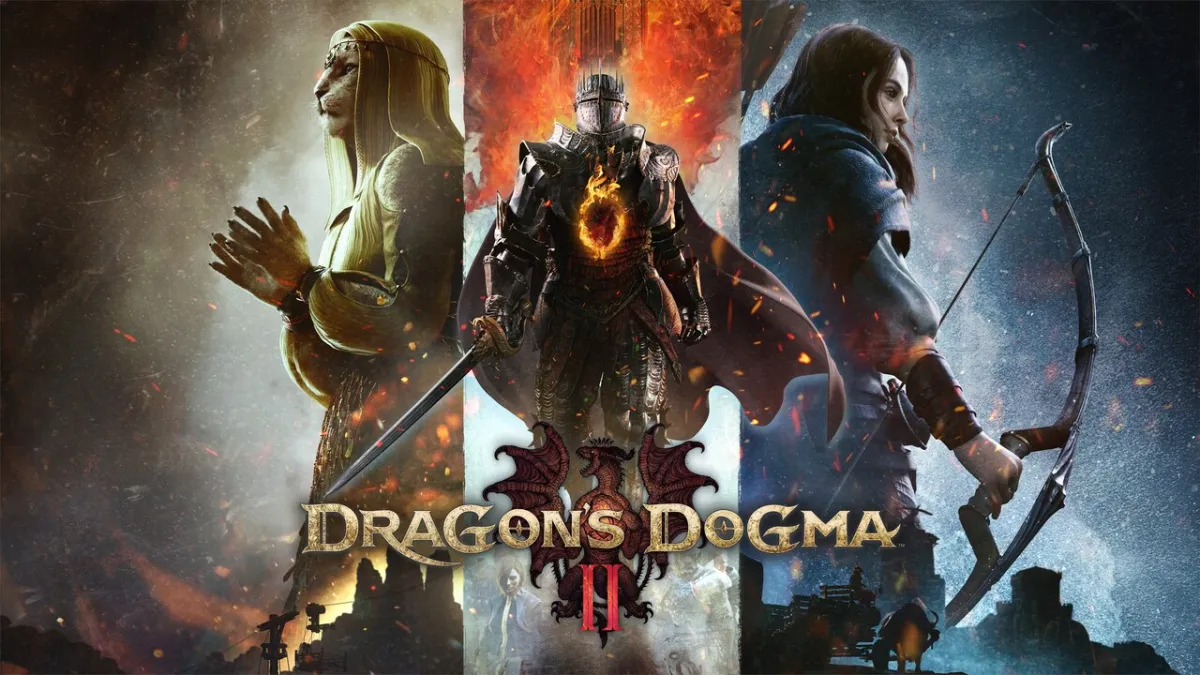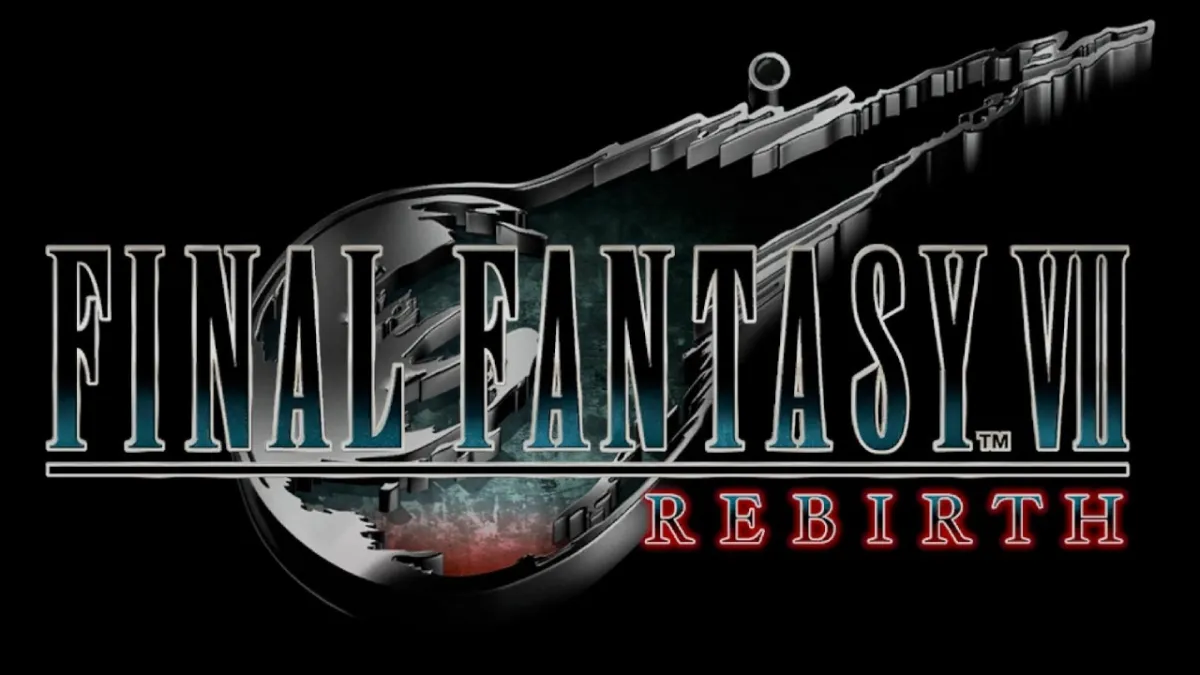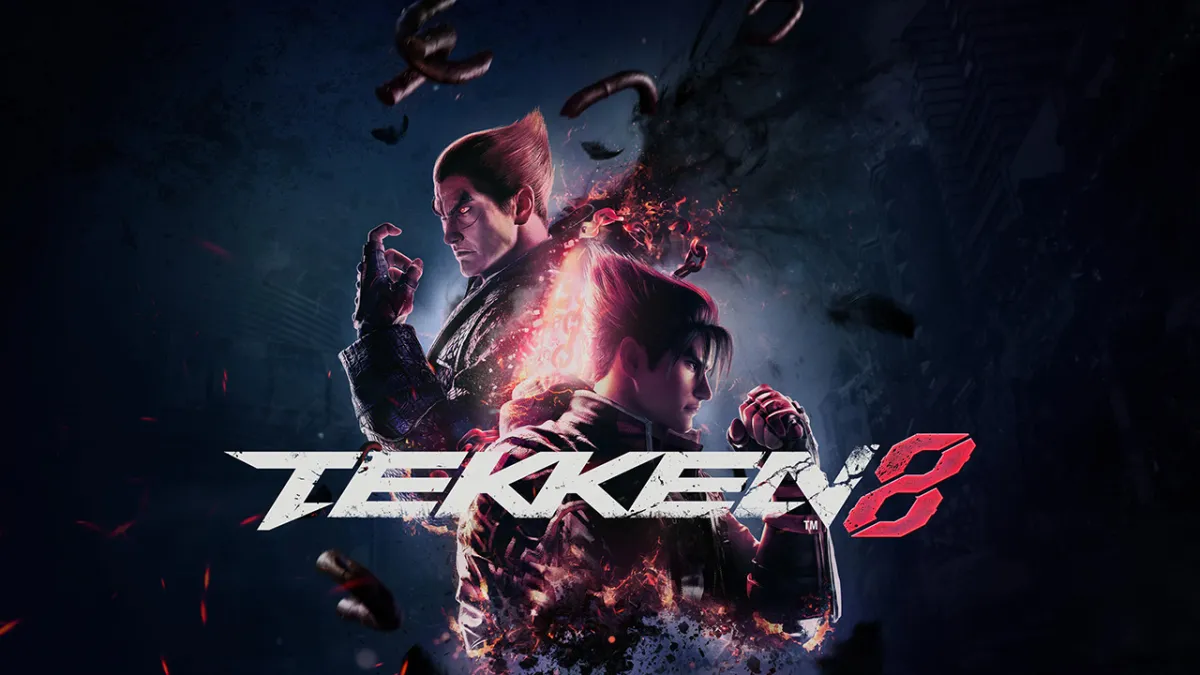Epic. If there could only be one word used to describe Total War Rome 2, that would be the word. This newest addition to the Total War series from Creative Assembly is just brimming with epicosity, far more than any of its predecessors contained. Unfortunately, if it was three words for Rome 2, then it would actually be epic, but flawed.
Before I continue, however, I think it’d probably be a good idea to give you, the reader, an idea of where I’m coming from with my Total War background. I’ve never played Shogun or the first Medieval. Loved the first Rome, Medieval 2 and Empire (which is arguably my favorite). I refuse to bother with Napoleon and I haven’t really played Shogun 2. In my mind, Shogun 2, beautiful as it may have been, was a big step back with the campaign map of just Japan compared to the ambitious and initially flawed Empire. Having been playing Total War Rome 2 for the last few days, I get the feeling that Rome 2 is in a very similar boat to Empire.
Let’s get all the pleasantries out of the way first though. Yes, Total War Rome 2 is also very pretty. All the screens you’ve seen aren’t lies, it is a very beautiful game. In fact, it is undoubtedly the prettiest Total War yet. Rome 2, being filled with epicosity, is also a very big game in every sense of gameplay: Big map, big armies, big decisions.
They’ve added quite a lot of nifty features that I’ve never come across in Total War before (that very well may have been in Shogun 2) like slow motion speed in battles and the ability to choose the type of bodyguards your general will have: Heavy cavalry, heavy infantry or some sort of faction specific unit like chariots. Having all the 170 odd regions being governed by one faction or another, without the all-encompassing “rebel” faction of the past, really adds a new level of immersion into the campaign.
Also, the ability to just give control of a portion of your army to an AI commander in battle whenever you wish is quite useful when you quite frequently have armies of at least 12 or more units running about. The prologue tutorial campaign was also fun and quite the education. There aren’t really many things better than listening to Mark Strong being a Roman general. It’s a Total War game and with this title Creative Assembly has cemented their place as the (arguably only) makers of the best RTS-grand strategy hybrid games.
I would say that the gist of Total War Rome 2 is this: If you’ve played Total War before and you want to play a new one, you will definitely have some fun with it. If this is your first Total War game, you are going to be less likely to be overwhelmed by everything, as opposed to previous titles in the series. This is not a bad game.
It’s just not an overly good game. Yet. As of this writing, there appear to have been some minor patches to the game (having been released for about 3 days now), but there are still many issues that haven’t been resolved, some of which are fixable by tweaking and balancing, some of which are a result of just poor design. Hopefully all the issues will be resolved, and update after update will make Total War Rome 2 live up to its hype, but that’s still weeks and months, if not years, away.
Swollen Maps and Imperial Pains
Take for example the campaign map. It is ridiculously big. Bigger is usually better, but you know something might be up when the snapping to places by clicking on the minimap takes upward of 4 or 5 seconds as your view flies over all of the landscape in between, as opposed to just instantly snapping like it used to. It might be kind of cool the first few times, but it gets annoying the larger your empire gets, when you will want to use your minimap to get to certain areas of interest faster. It’d be nice to have a setting to turn on immediate snapping back on again.
Empire building has become something that contains even more tedium
Tied in with the campaign map is the empire management. Probably for the first time in my Total War experience, I have very little idea what anything does. It took me the longest time to realize that any upgrade you make to a settlement in a region affects all the other settlements in the province. People in Salernum pretty miffed off? People in Capua will be too.
That isn’t the only source of ambiguity. There are many new factors that apparently affect the game, with slaves being a major one. After winning battles, you have the option to sell your captives into slavery giving yourself a small temporary boost in cash. Problem is, these slaves will help drop public order in your provinces, like no other, and will take quite a long time to lose its effect. In fact, as you play through the game, you will realize that pretty much everything just drops your public order with very few things going the other way.
In the previous Total War games, city details pretty much gave you everything you needed to know about anything in the city and you knew what needed to be done to fix the problems that you might find. I have become absolutely stumped in Total War Rome 2. Populace unhappy? Nothing you can really do about it. Short of garrisoning armies or stop taxing the whole province, there are few happiness buildings around and not many of them have much effect until they get to the higher tiers where they just eat up food like nothing else and are prohibitively expensive. Seeing that a happiness building, which will probably do little to dent general public outrage anyway, will take 4 turns to build, and with a rebellion being imminent, it becomes unsurprising to have a rebellion or two every once in a while, especially in newly captured regions that have a culture different from yours, which is pretty much always when you have imperial ambitions.
Not that you have to worry about rebellions all that much. Garrisons for even the smallest towns are quite large, as every building you decide to build will spawn garrison units ranging from farmers to hardcore warriors, who are more than capable of beating rebellions whenever they decide to attack. So really, rebellions end up more a nuisance than a threat. Just a nuisance that tends to happen all too often. Tedious.
Province details (other then being a pain to access unless you use hot keys, as you can no longer just double click a city to pop it out) display very little information outright. The majority of the more useful information is accessed by mousing over the thing you want to explore further and waiting a few seconds as the game realizes you want to pop a new information bubble out. Tedious.
The user interface is also pretty spectacularly horrendous. Although it’s very clean, it might be a bit too empty. Messages no longer appear on the side at the beginning of each turn, but in its own separate menu, a menu you will have to remember to click to check every turn as only some of the important messages will be immediately displayed for you. In a game where Creative Assembly have tried to reduce micromanagement, all they’ve managed to do in Total War Rome 2 is just add something new and unnecessary to the micro routine. Tedious.
Trade, something which was magnificent in Empire, is just a shambles in Rome 2. Resources are few and it is extremely difficult to open trade with factions, which is exacerbated by the lack of explanation for why factions don’t want to trade with you. Do they not want free money? At least in Empire, there was the “Suggest terms” button whereby you could essentially ask the other faction “what would make this deal work?” Many times you would receive proposals that could only have come from an asylum, (Ireland for a trade agreement you say?), but at least you get a glimpse of how much they don’t want to trade with you. That doesn’t exist in Rome 2. You just have to trial and error, which is again: Tedious.

It’s also not overly clear why trade income is the way it is. There is no “global price” displayed for tradeable resources, maybe that’s for realism since there wasn’t really much globalization in the classical times, but it’d be nice to know how much my wares are selling for per unit and why they are selling for that price. The in-game adviser had the cheek to suggest that “the income from your tradeable goods is determined by supply and demand of the resources from your trade partners and their trade partners.” She then directed me to the trade tab. I paraphrased, but I could find absolutely no information on any of that. All I know is that a certain resource (no quantity) is being exported to this faction for a seemingly arbitrary amount.
It is also imperative that you make sure you find an alternative activity to help pass the time as you play Total War Rome 2. Waiting times can be very long. This doesn’t just include ordinary loading screens, but like in any other Total War game, whenever you end your turn on the campaign map, you will have to wait for all the other factions to make their moves. All 100 of them. It isn’t so bad when you first start out and basically see none of the map. It only takes about 10 seconds, say if you are the Parthians and only see a small chunk of Asia Minor in the very beginning. But as you grow, you see more and you will have to wait a lot more, upwards of a minute and since many a turn you will find yourself doing very little, you will just be waiting. And waiting. And waiting.
Also Politics is technically a thing Creative Assembly is trying to push: The internal strife of a faction, the Achille’s heel of large empires. It’s a great idea, but the information gap problem occurs again. It is not clear at all why the people don’t support you and there is no tab or information bubble at all that tells you. In fact, in the scope of things, politics doesn’t seem to do anything at all, other than potentially leading to a civil war if things go too sour, which just means more work for your garrisons and maybe your armies. Also family trees and all that “nonsense” seem to no longer be a thing to worry about as new generals from your “family” will just randomly be available at times the game fancies.
By and large, empire building in Total War Rome 2 has become something that results in even more tedium, much earlier in the campaigns than it used to, in spite of the fact that Creative Assembly had been, apparently, trying to stream line everything with its provincial controls and some updated mini-map functions, among other things.
Units, Armies and Battles
I’m very confused by agents. I’m not quite sure why there even need to be three different types of agents. You have spies, champions and dignitaries. They all seem to be able to do pretty much the same things except that they have different names for their actions. Whilst a scout/spy may poison wells and solicit traitors. Champions will just bash heads in with single combat. In the end they all have assassination, manipulation and sabotage abilities. It seems the only reason for their existence is that they form a rock-paper-scissors with dignitaries frequently besting champions, who best spies, who best dignitaries.
I do quite like the new system of standing armies with names and traditions that can be upgraded. The different stances an army can take also adds more strategy on the campaign map. Do you want to force march your troops at the risk of getting ambushed too easily? Do you want to ambush? Generals too can be upgraded and it seems to add a decent amount to the in-game system with morale boosts and other bonuses. Trouble is, it doesn’t seem overly well thought out. Generals can gain traits or skills that clearly help domestic things, like increasing tax revenue in the province they are in, which would benefit your core regions, (which have higher income) but your generals (since you only have a few) should be on the frontlines, fighting. Not caring about taxes.
It also appears that the game is following in the footsteps of Shogun 2 by not having the retraining of units option, as over time your units will naturally replenish when in friendly territory. That’s all well and good, but it would still have been nice to have the ability to pay money to immediately replenish a decimated unit, as opposed to waiting 3 or 4 turns for them to get back to full strength.
Battles are quite enjoyable, or would have been if the frame rate wasn’t so outrageously low at times. My PC is very comfortably better than the recommended systems requirements, nearly double in every way in fact, but still coughs and splutters in the form of frame rate drops when a lot of units are on the screen at very high settings (not ultra or extreme), which is all the time, because your armies are few and therefore big.
When the frame rate is acceptable, battles become very fast paced and organic. Units no longer feel like clunky boxes of polygons, but flowing groups of men. Soldiers do, at least from what I have seen, show emotions and captains and generals do give impromptu rallying calls and speeches. Charges, in general, feel faster and more liquid than they ever did before. All these good points aside, however, and battles somewhat feels like they lack the varied strategies it used to. Battles have pretty much devolved into forming lines, lines engage and whoever has more units (or reserves like cavalry) will focus on a certain point till the enemy routs, a schwerpunkt if you will. Rinse and repeat till all the enemy is routed. The game certainly needs some balancing, cavalry is too overpowered and infantry is too soft.

It is, however, quite a good new addition to having more general abilities and showing their areas of effectiveness. A well placed inspire or rally ability can change the tide of battle in your favor. Or perhaps it is just the general incompetence of the AI. The AI makes a lot of very poor decisions, especially when defending towns and cities. Many times I have been outnumbered (as the garrison plus a full stack of enemies will always outnumber my own full stack), but instead of sallying forth to engage me on the open fields where their numbers and simple maneuvers would tip the scale in their favor, the AI chooses to stay in the narrow and confined streets which become a grisly meat grinder where pure numbers lose their intrinsic value. Many other times, I’ve seen the AI abandon the defense of walls entirely, in favor of placing units on the strategic capture points within the city instead, letting my troops walk practically unharmed up to the walls with ladders. It appears that no one has explained the usefulness of walls, when defending things, to the AI generals.
They also seem very jumpy. Too jumpy. In an open field battle, I decided to be a smart little boy and hid two cavalry units in a nearby forest. It just happened to be that the forest was a bit too close and the enemy detected them pretty quickly. However, having detected all two of the hidden cavalry units of mine, the AI decides to completely shift their whole line to face the two cavalry units. as opposed to just a portion of their line, even though my main line. which was clearly in their line of sight. was more of a threat (being much bigger). This then made their flank completely open for the majority of my forces, short work after, they got completely decimated.
To add to their incompetence on the field, the AI is also extremely pacifist on the campaign map. Having met about 25 different factions in my first 35 turns, there have been about 15 wars, 10 of which were started by me, 3 which had already been ongoing from the start of the campaign and only 2 which have been instigated by AI factions against each other. Not exactly total war.
I was pretty terrible at naval combat in previous games, but it has become a little more enjoyable in Rome 2, although it can be quite frustrating when you lose a whole unit of heavy principe marines when their ship gets rammed and crumbled by five other smaller, less expensive ships. Perhaps its just because it is more simple, since naval combat essentially consists of ramming, boarding or firing projectiles, all of which are done at very close quarters.
The line of sight system is quite a great new addition. It does add a new dimension of tactics, as hiding behind a hill or forest now actually has a tactical advantage (of not being seen) as opposed to being pointless in the past. Ambushes are much fun and the cinematic camera view is absolutely brilliant to watch, albeit a bit lacking due to the lack of control you have over it, as it immediately snaps to the unit you had highlighted before you clicked the button. The ability to move around to other units or doing Star Wars Empire at War-style, where the cinematic camera automatically panned to areas of interest, would have been pretty amazing.
Multiplayer
It exists.

To be fair, the large majority of people who will play Total War Rome 2 will be playing it for the singleplayer and not the multiplayer. Multiplayer single battles are unchanged from before and the campaigns (co-op or head-to-head) differ very little. You would do well to steer away from the multiplayer campaigns for now, however, as all the issues of waiting you have had in singleplayer campaigns will be exacerbated by the multiplayer when you have to wait for your friends (or frenemies I suppose) to finish their battles, that you aren’t in, as well as their turns.
What Would Have Been Nice
The ability to construct walls around my smaller towns would have been great. Provincial capitals, by default, come with walls, but the smaller towns don’t. In general, although it may be a mess of tables and numbers, it would have been highly preferable to have all the data and information just displayed outright as opposed to being hidden away in bubbles that you have to wait for to appear. Just more information in general would be brilliant, perhaps even taking a cue from Empire Total War and telling you the potential of buildings being built would have been pretty spectacular as well.
The crashes and bugs would have been nice not to have, but it seems nowadays, that’s basically impossible. The most annoying bug I ran into was my run-ins with un-killable armies and fleets. The most memorable time was of the fleet of Samnite Admiral Secundus Silo in the prologue campaign, something you would expect to be perfect. This bloke was supposed to help teach you the ways of naval battles, effectively by losing to you, but somehow in my prologue campaign, after being beaten, and beaten, and beaten, he just would not die.
It got to the point where his ship only had 33 men left, including himself and I would instigate a battle with him with my fleet of 7 fully replenished ships. We would kill every man and the game would declare “the enemy general is dead!” (even though it was an admiral) and the battle will end, but lo and behold, there stands Secundus Silo and his little ship all fine and dandy on the campaign map. 5 times the admiral “died” and 5 times his little ship just stayed not dead on the campaign map with the same crew strength of 33. It got to the point where I finished the prologue with old Secundus “The Curse of the Black Pearl” Silo still sailing merrily around the Tyrrhenian Sea.
Three words for Total War Rome 2: Epic, but flawed
A lot of balancing and optimizing will need to be done. The game just can’t run at such low framerates at the most epic times. I shudder to think what people who only satisfy the minimum requirements will play and cavalry is just too overly powerful. I also tend to have control issues, but they usually co-incide with framerate drops.
The Verdict
I’ve said a lot of negative things about this game and I feel I’ve only scratched the surface without even being overly nitpicky. Yet I have still found myself with eyebags growing beneath my eyes as I have played Total War Rome 2 into the dead of the night, for multiple nights. It’s just, at this point, I find myself playing it to just look for things to talk about, as opposed to playing for the fun of it. Rome 2 is indeed a Total War game and you will definitely find it one of the most enjoyable experiences you’ll ever have in the series… In a few months from now when updates, patches and DLCs should have come out to fix the game. It has potential, but as it is now, it just feels incomplete and broken. Thank Jupiter games are reviewed by their eventual complete editions and not the state they are released in, right? Oh wait. They aren’t. Rome 2 gets “Meh” because it doesn’t really live up to its hype and the promise of being much better in the future doesn’t stop it from being pretty unplayable now. My recommendation is that if you don’t want to be let down by Total War Rome 2, just wait a few months (it will probably be cheaper too) before you get it.







